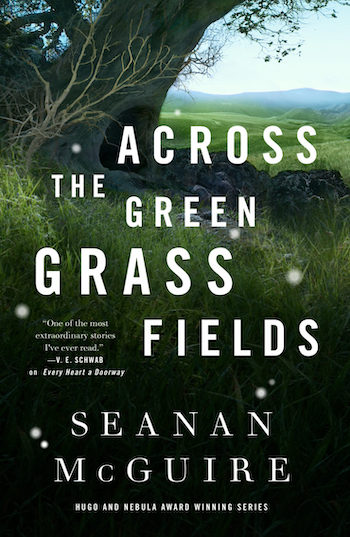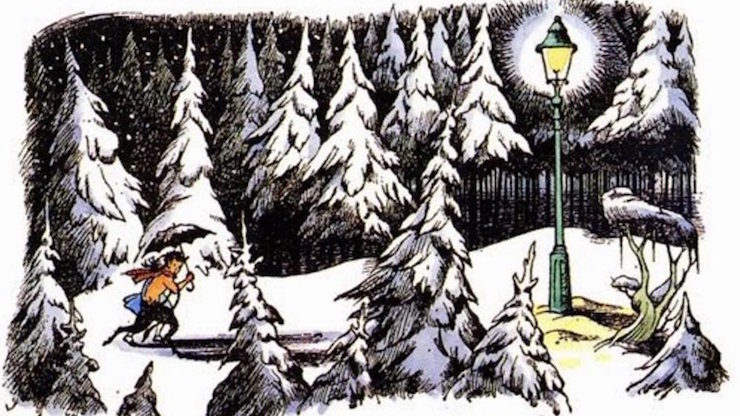As someone who has been known to start series smack in the middle—with both books and television shows—I tend to be a bit agnostic on the question of “what order should I read/watch these in?” With three exceptions:
Legends of Tomorrow, which everyone, without exception, should start in the second season, only tackling the first season much, much later after getting a chance to realize that these characters can actually be fun.
Blackadder, which everyone, without exception, should also start in the second season, only in this case, never return to the first season at all.
And The Chronicles of Narnia, which everyone, without exception, should read in publication order.
That is:
- The Lion, the Witch and the Wardrobe
- Prince Caspian
- The Voyage of the Dawn Treader
- The Silver Chair
- The Horse and His Boy
- The Magician’s Nephew
- The Last Battle
At least for the first read.
It’s fair to say that not all readers, or even all publishers, agree with me. After all, the story of Narnia—its very very earliest beginnings—technically starts with the sixth book on that The Magician’s Nephew, which tells the story of the creation of Narnia, in a scene C.S. Lewis pretty much ripped off straight from the then-unpublished work of his close friend, J.R.R. Tolkien. (Tolkien later noted that he did not think overly highly of the Narnia books, with this sort of thing presumably partly why.) The events of The Horse and His Boy happen during the last few pages of The Lion, the Witch and the Wardrobe, featuring various characters from that book in various cameo appearances. And lots of people like to start a story at the very beginning.
Plus, reading the books in publication order does mean smashing head-on into arguably the weakest work of the entire Narnia series, Prince Caspian, a work that not only contains several bits that really don’t make a lot of sense, once scrutinized, but also is largely told in a flashback format, and has a comparatively weak ending that can and has left readers dissatisfied. So perhaps not the best approach.
Also, to be fair, the publication order doesn’t always match the written order. The Horse and His Boy is not just set in the last few pages of The Lion, the Witch and the Wardrobe, but was also written before The Silver Chair, despite being published afterwards. It’s the sort of publishing thing that happens all the time, but for readers focused on following a writer’s development and reading books in the order that they’re written, well—publication order isn’t the best way to do that for the Narnia series.
And C.S. Lewis himself once told a young fan that chronological order was probably the best way to read the series.
This all presumably explains why several editions of The Chronicles of Narnia now list the books in chronological order—to the point where many readers now think that the chronological order is the publication order.
This is still wrong.
I say this, because in later rereads, I did try to read the Narnia books in chronological order. And let me tell you what happens when you try this:
The Magician’s Nephew pulls away quite a bit of the magic.
Part of the joy of The Lion, the Witch and the Wardrobe is just how much is left unexplained—that lamppost shining in the trees, for instance, with presumably no source of gas or electricity; Mrs. Beaver’s sewing machine; why, exactly, Father Christmas is visiting a land which shouldn’t even have Christmas. Aslanmas, sure, but Christmas, no.
The Magician’s Nephew tries to explain quite a bit of this, in the process robbing the scenes of their wonder (and screwing up the geography of Narnia; the Lamppost should not be as far away from other places as it is)—while, aggravatingly, still leaving other elements—like that sewing machine—unexplained, or for that matter, making even less sense—like Father Christmas—than they did originally.
Buy the Book


Across the Green Grass Fields
And reading these books in chronological order just spotlights how inconsistent they are. For instance, at the beginning of The Lion, the Witch and the Wardrobe, Tummus the Faun is not certain that humans even exist—he even has a book on his shelves that asks that very question, presumably in the negative, given his surprise upon seeing Lucy. In The Horse and His Boy, which, again, takes place during The Lion, the Witch and the Wardrobe, we find out that just south of Narnia—no more than a couple of days riding on horseback, is an entire empire filled with humans. That is something, frankly, a little easier to overlook, or at least accept, when you have a few books to read between these moments, including books that showcase other humans, rather than trying to suggest that the Pevensies are the only ones around.
Worse, just because The Magician’s Nephew was written and published after the other Narnia books, it includes several elements that don’t appear in The Lion, the Witch and the Wardrobe because C.S. Lewis hadn’t thought of them yet. So, for instance, Polly and Digory look at what will be Archenland and other lands, mentioning them—places that, if you read in chronological order, won’t be mentioned for a few more books.
And although reading in publication order does mean contending with Prince Caspian fairly early on, starting with The Magician’s Nephew means beginning with another weak link in the series. Granted, in either reading order, it takes awhile to reach the best book in the series, The Silver Chair, but with publication order, you at least get to lead off with a good book. With chronological order, you get weak book first—and one that spends very little time in Narnia. Oh, the London stuff in it is all very amusing—some of the best comedy stuff that Lewis ever wrote—but it’s not Narnia.
No. Read in publication order, so that you can read along as Lewis starts discovering this world—a world that can be reached if you just find the right sort of wardrobe. A world that in many ways resembles a dream, what with the talking animals and the inexplicable sewing machines and the parcels apparently just purchased by a Faun in a land that seemingly has no stores—but is, the author assures you, quite quite real. And then, in the next book, find out that yes, it’s a world that you can return to—not on your own, but with help. Maybe. For one more trip. A world that is just a bit larger than it initially seemed. A world with dragons. A world with giants. And an entire empire that managed to go unnoticed on your first visit.
And then—only then—read how it was created, right before you read how it ends.
If you do, however, continue to wrongly insist that the books be read in chronological order, here they are:
- The Magician’s Nephew
- The Lion, the Witch and the Wardrobe
- The Horse and His Boy
- Prince Caspian
- The Voyage of the Dawn Treader
- The Silver Chair
- The Last Battle
Originally published December 2017
Mari Ness Lives in central Florida.










